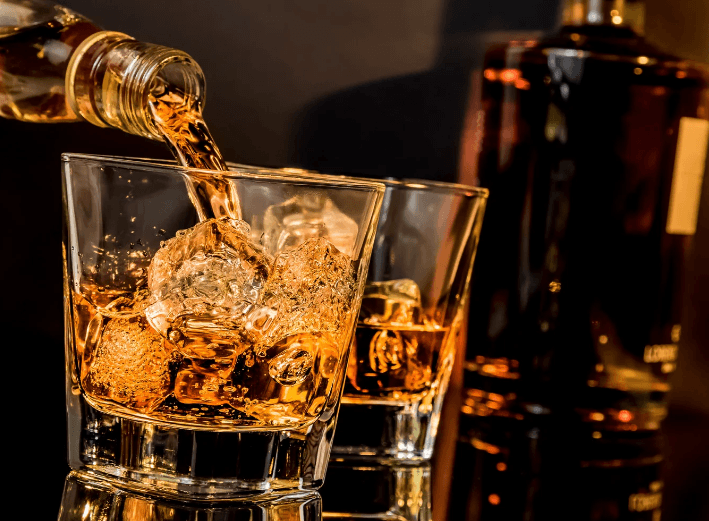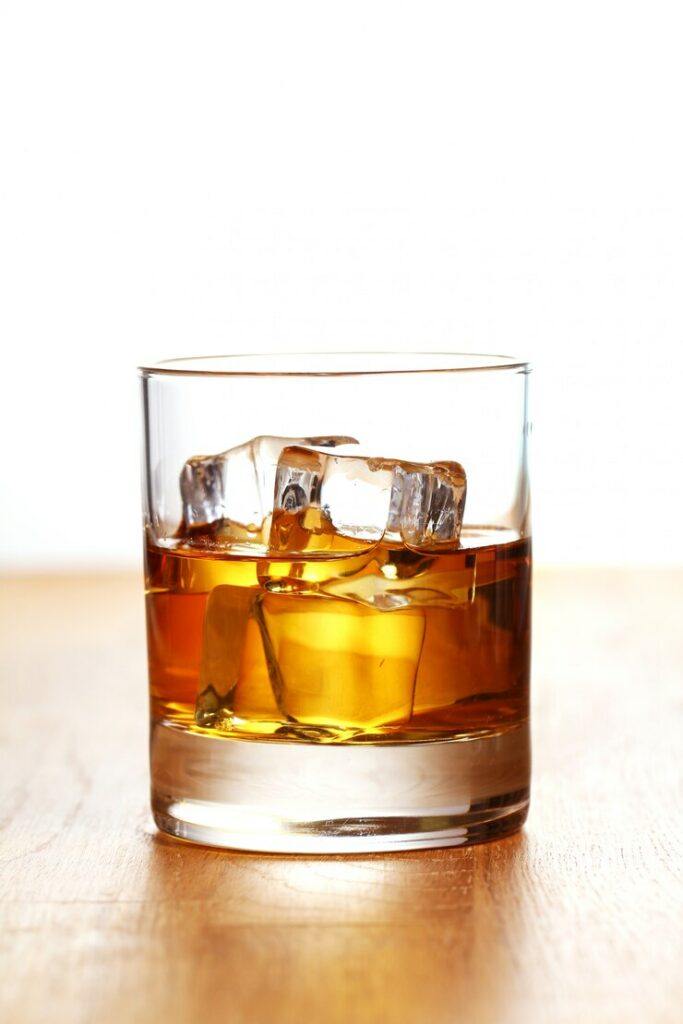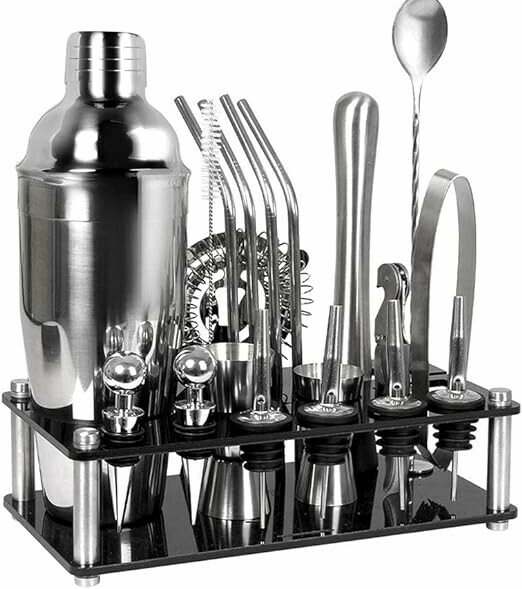In the world of whiskey, time is not just a measurement;
Welcome to Shake, Sip, Serve!
Here, we believe every cocktail tells a story, and we’re here to help you shake, sip, and serve your way through the world of creative drinks and unforgettable bar experiences.
Whether you’re an aspiring mixologist, a seasoned bartender, or just someone who loves a perfectly crafted drink, you’ve come to the right place. Grab your shaker and let’s dive into today’s mix—because life’s too short for bad cocktails! 
it’s a transformative force that imbues the spirit with character, complexity, and depth. Whiskey aging is a meticulous process that involves the interaction of the spirit with wooden barrels over an extended period. In this journey through the aging process, we’ll explore the chemistry behind whiskey maturation, the role of time in flavor development, and how various factors influence the aging process.
Explaining the Chemistry Behind Aging:
At its core, whiskey aging is a chemical dance between the spirit and the wood of the barrel. As whiskey rests in the barrel, it undergoes a series of chemical reactions that contribute to its flavor profile. The porous nature of the wood allows the whiskey to interact with compounds such as lignin, hemicellulose, and tannins, which impart unique flavors and aromas to the spirit. Over time, these interactions lead to the formation of complex compounds that give whiskey its characteristic taste and color.
Time’s Role in Flavor Maturation:
As whiskey ages, it undergoes a gradual transformation, evolving from a raw and fiery spirit into a refined and nuanced elixir. During the aging process, the spirit absorbs flavors from the wood, including vanillin, caramel, and spice notes. Additionally, oxidative reactions take place, mellowing harsh flavors and smoothing out rough edges. The result is a whiskey that is rich, flavorful, and well-balanced, with layers of complexity that tantalize the palate.
Various Factors Influencing the Aging Process:
While time is a crucial factor in whiskey aging, it’s not the only one. Several variables influence how whiskey matures, including climate, wood type, and barrel size. For example, whiskey aged in warmer climates tends to mature more quickly due to increased temperature fluctuations, while whiskey aged in cooler climates may take longer to develop its full flavor profile. Similarly, the type of wood used for the barrel, whether it’s oak, cherry, or chestnut, can impart distinct flavors to the whiskey.
How to Identify Flavor Notes Impacted by Aging:
One of the joys of whiskey tasting is discerning the subtle nuances of flavor imparted by the aging process. As whiskey matures, it develops a range of flavor notes, including oak, vanilla, caramel, spice, and fruit. By nosing and tasting the whiskey, enthusiasts can identify these flavor profiles and appreciate the complexity that time has bestowed upon the spirit. Pay attention to the aroma, texture, and finish of the whiskey to fully experience its age-infused flavors.
The Chemistry of Transformation: A Beautiful Dance
As the whiskey rests in the barrel, a beautiful dance of chemistry unfolds. Here’s a breakdown of the key players:
- Extraction: The alcohol in the whiskey acts as a solvent, extracting flavors and compounds from the charred wood. These include vanillin (for vanilla notes), lactones (for coconut and creamy flavors), and tannins (for a dry, mouth-coating sensation).
- Oxidation: Over time, oxygen slowly interacts with the whiskey through the barrel’s porous walls. This process mellows the harsh alcohol bite and contributes to the development of more complex flavors, like caramel and dried fruit.
- Evaporation: A natural process known as “the angel’s share” allows a small amount of the whiskey to evaporate through the barrel. This process concentrates the remaining whiskey, intensifying its flavors.
Time Unveils the Whiskey’s Story
The length of time a whiskey spends aging dramatically impacts its flavor profile. Here’s a general timeline:
- Younger Whiskies (2-5 Years): These whiskies tend to be lighter in color and have more prominent flavors from the grain used and the char on the barrel. You might taste notes of vanilla, spice, and perhaps some fruitiness.
- Mid-Aged Whiskies (6-10 Years): As the whiskey spends more time in the barrel, the wood’s influence becomes more pronounced. The flavors become more complex, with notes of caramel, toffee, and baking spices emerging.
- Older Whiskies (10+ Years): With extended aging, the wood’s influence can become more subtle. The whiskey develops a smoother, richer character with deeper notes of dried fruit, leather, and tobacco.
Beyond the Years: Additional Factors at Play
While time is a crucial element, several other factors contribute to the final flavor profile of whiskey:
- Type of Barrel: The previous contents of the barrel can significantly impact the whiskey’s taste. For example, bourbon must be aged in new charred oak barrels, while sherry casks can impart notes of dried fruit and spice.
- Climate: The climate where the whiskey is aged plays a role. Warmer climates lead to faster extraction and evaporation, resulting in a quicker maturation process. Cooler climates slow down this process, allowing for a more gradual development of flavors.
The Debate on Age Statements:
In the world of whiskey, age statements have long been used as a measure of quality and prestige. However, the relationship between age and quality is not always straightforward. While older whiskeys often command higher prices and are perceived as more desirable, age is not the sole determinant of a whiskey’s quality. Some younger whiskeys exhibit exceptional flavor profiles that rival their older counterparts, challenging the notion that older always means better.
What ‘No-Age-Statement’ Whiskeys Tell Us:
In recent years, there has been a rise in the popularity of ‘no-age-statement’ (NAS) whiskeys, which eschew traditional age statements in favor of emphasizing flavor and craftsmanship. These whiskeys offer a departure from the age-focused mentality and encourage consumers to judge the whiskey based on its taste rather than its age. While age can certainly contribute to a whiskey’s flavor profile, NAS whiskeys demonstrate that quality can be achieved through careful blending and maturation techniques.
Tips for Whiskey Enthusiasts:
For whiskey enthusiasts looking to deepen their appreciation of age-infused flavors, there are several tips to keep in mind. First, take your time when tasting whiskey, allowing the flavors to unfold gradually on your palate. Experiment with different whiskey styles, ages, and flavor profiles to expand your palate and discover new favorites. Additionally, consider attending whiskey tastings and events to learn from experts and fellow enthusiasts, gaining insights into the art and science of whiskey tasting.
Conclusion:
In the world of whiskey, patience is indeed a virtue. The aging process transforms raw spirits into liquid gold, imbuing them with complexity, character, and depth. As whiskey enthusiasts, we have the privilege of witnessing this transformation and savoring the fruits of time’s labor. Whether it’s a well-aged single malt or a carefully crafted NAS blend, each whiskey tells a story of craftsmanship, dedication, and passion. So, raise a glass to the art of patience and its reward in whiskey tasting.
Grab your shaker, gather your ingredients, and prepare to embark on a journey of flavor and discovery as you explore the exciting world of experimental mixology.
Welcome to Shake, Sip, Serve!
Here, we believe every cocktail tells a story, and we’re here to help you shake, sip, and serve your way through the world of creative drinks and unforgettable bar experiences.
Whether you’re an aspiring mixologist, a seasoned bartender, or just someone who loves a perfectly crafted drink, you’ve come to the right place. Grab your shaker and let’s dive into today’s mix—because life’s too short for bad cocktails!
Check out more:
-
-
- What is Whiskey?
- History and Origins of Whiskey
- Types of Whiskey: Scotch, Bourbon, Rye, Irish, and more
- The Whiskey Making Process
-
- Ingredients: Grains, Water, Yeast
- Mashing
- Fermentation
- Distillation
- Aging in Barrels
- Bottling and Packaging
- Exploring Whiskey Regions
-
- Scotch Whiskey Regions: Highland, Lowland, Speyside, Islay, Campbeltown
- Bourbon Whiskey Regions: Kentucky and Beyond
- Irish Whiskey Regions
- Other Whiskey Producing Regions
- Understanding Whiskey Labels and Classifications
-
- Age Statements
- Single Malt vs. Blended Whiskey
- Cask Strength, Single Barrel, and Small Batch Whiskeys
- Grain Whiskey, Pot Still Whiskey, and Malt Whiskey
- Tasting and Evaluating Whiskey
-
- Whiskey Glassware
- Proper Whiskey Tasting Techniques
- Flavor Profiles: Sweet, Spicy, Smoky, Fruity, Nutty, and more
- Identifying Characteristics: Nose, Palate, Finish
- Pairing Whiskey with Food
-
- Complementary Flavors and Textures
- Whiskey and Cheese Pairings
- Whiskey and Chocolate Pairings
- Whiskey Cocktails and Food Pairings
- Collecting and Investing in Whiskey
-
- Rare and Collectible Whiskeys
- Whiskey Investment Strategies
- Proper Storage and Care of Whiskey
- Whiskey Culture and Traditions
-
- Whiskey Drinking Etiquette
- Famous Whiskey Drinkers and Stories
- Whiskey Festivals and Events
- Whiskey Cocktails and Recipes
-
- Classic Whiskey Cocktails: Old Fashioned, Manhattan, Whiskey Sour, and more
- Modern Twists on Whiskey Drinks
- Whiskey Infusions and DIY Cocktail Ingredients
Whiskey Aging Process: How Time Impacts Flavor
Immerse Yourself In Whiskey Culture: Etiquette, Legends, And Celebrations
The Art Of Whiskey Collecting And Investing: A Connoisseur’s Guide
Unveiling The Spirited Saga: A Journey Through The History Of Whisky
-
Disclaimer: This post contains affiliate links. If you purchase through these links, I may earn a small commission at no additional cost to you. .
-
Disclaimer: This post contains affiliate links. If you purchase through these links, I may earn a small commission at no additional cost to you.


